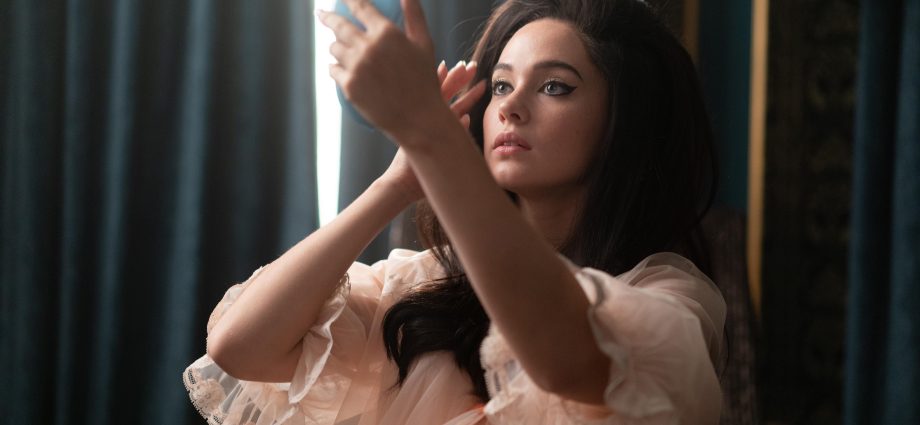Rating: 3 out of 5
The screen fades to black as the movie ends, my friend and I exchanged puzzled glances, left wondering about the abrupt conclusion–did we miss part of the story?
Sofia Coppola’s “Priscilla” unfolds over a 1-hour-and-50-minute saga, recounting the story of a teenage girl entangled in romance with one of the era’s most prominent celebrities: Elvis Presley. The movie, based on Priscilla Presley’s 1985 memoir “Elvis and Me,” was released on November 3 and had a $20 million budget.
In line with Coppola’s signature style, “Priscilla” boasts stunning cinematography and meticulously crafted set design. The camera’s angles create an intimate atmosphere, resembling glances at Prisiclla’s life through moments like her disinterest in high school or the act of applying fake eyelashes even as she’s about to go into labor. According to an IndieWire article, cinematographer Phillipe Le Sourd shot the film digitally to tell the story in contrasting colors with pinks, magentas, and blues. The early scenes of the movie, where Priscilla meets Elvis in Germany, are more muted compared to her life in America with its vibrant colors.
Set predominantly in Graceland and Elvis’ bedroom, the film does not shy away from portraying an unromanticized view of the late singer. Unlike previous portrayals, Elvis acted nothing short of a man-child, throwing a chair when criticized, and asking to break up with his pregnant wife. On one occasion, Elvis has then 14-year-old Priscilla model dresses for him, leering at her with his friends as she tries on different outfits, refusing to let her wear what she wants. There is no hiding from the predatory nature of their relationship, with Elvis holding control over her clothes, social life, and finances.
Despite engaging in his rumored affairs, Elvis adamantly refrains from pursuing a sexual relationship with Priscilla until their marriage claiming they will start when the time is right. Once they consummate their union, he abruptly withdraws, almost as if he views her as “tainted” instead of as the once-innocent girl he dated. Coppola effectively captures the disturbing aspects of their situations.
Despite the movie’s gradual revelation of the toxic dynamics within their marriage, it leaves Priscilla’s character development unfulfilled. While the latter half of the movie intends to portray Priscilla’s gradual depression caused by a lonely tumultuous marriage, it starts to feel static and flat. The scenes where she gains her independence are short and unsatisfying, with a lack of resolution when the movie could have shown more scenes of gaining her independence, and of her life after Elvis. As the credits rolled, my sense of dissatisfaction lingered, leaving me with further questions on what happened next.
The movie was quite interesting, but I wouldn’t recommend going to the theaters to watch it. ‘Priscilla’ possessed the allure of a YouTube video perfect for background entertainment while cleaning.

